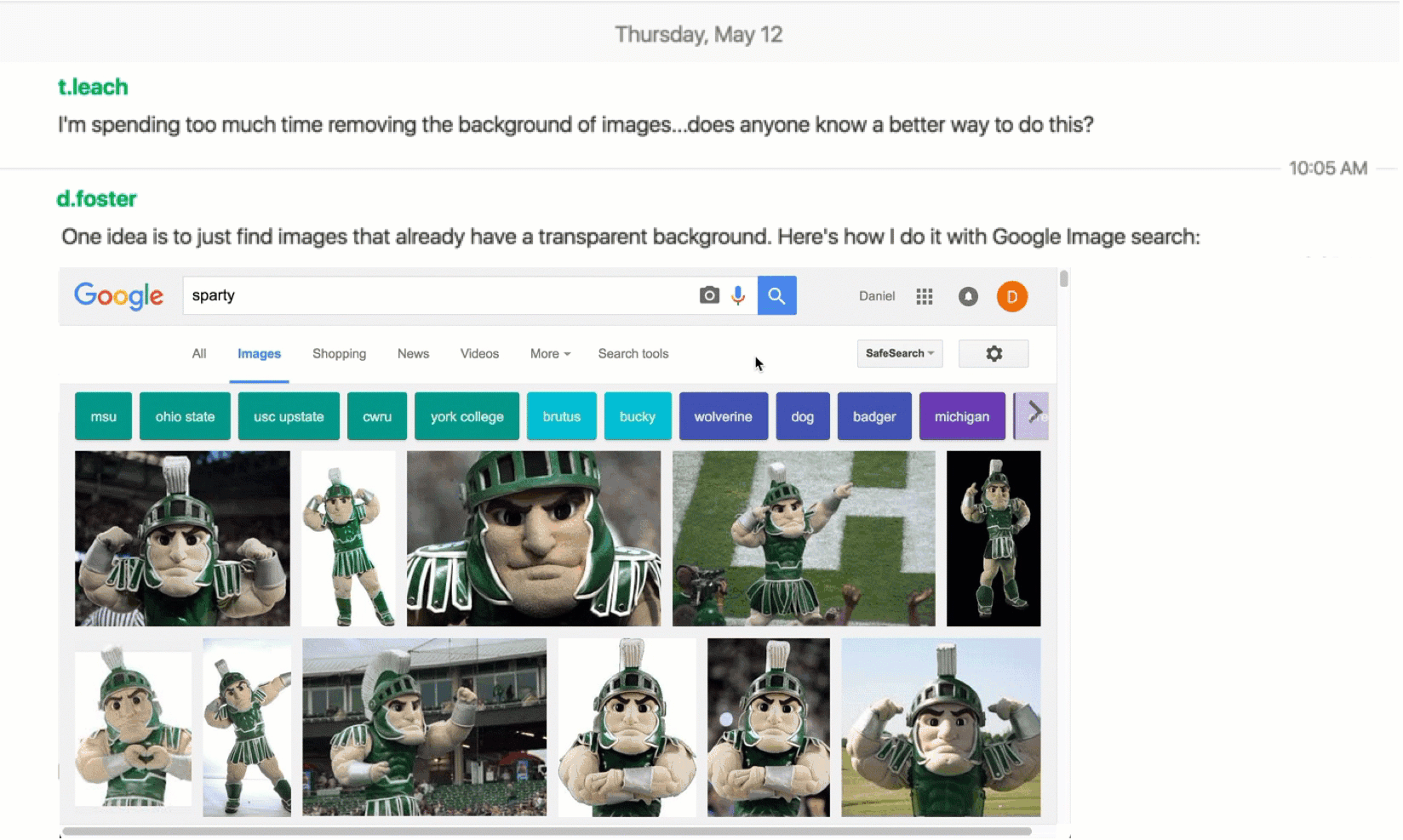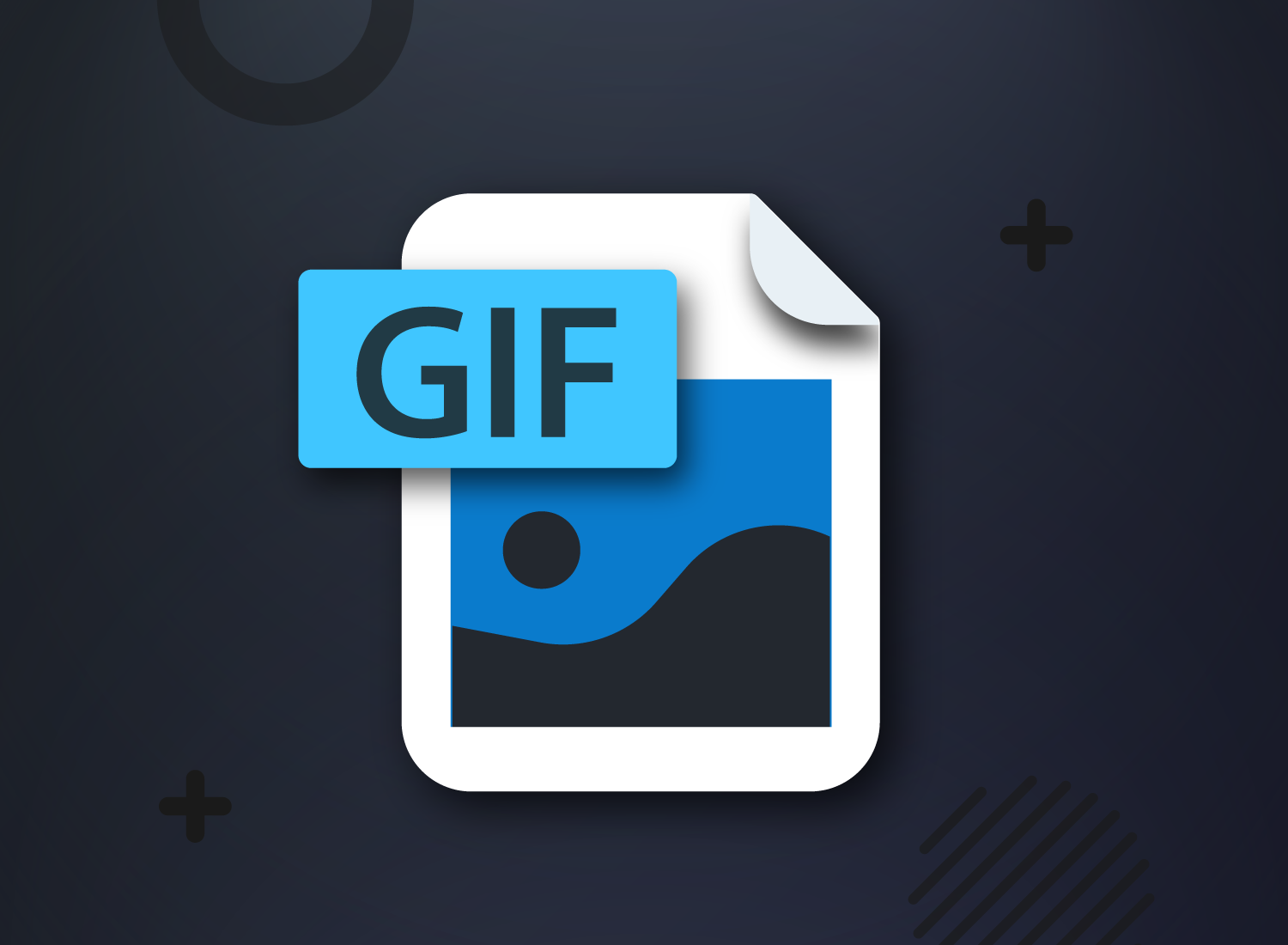The prevalence of remote work has really changed the way we interact in the modern world. It requires us to think very differently about how we communicate in the workplace – to consider the culture we want to create and think less traditionally about how we can make that a reality.
In years past, the idea of using visual methods of communication like emojis, memes, and GIFs at work would have seemed absurd and unprofessional. However, in the quest to create connection while using communication tools that can’t translate tone or nuance, these visuals have become invaluable tools.
When we are limited to only letters, numbers, and proper punctuation, it is nearly impossible to add personality or humor into a conversation without the risk of being misunderstood.
With remote work and globally distributed teams continuing to dominate the workforce, it is important to properly incorporate new ways of communicating that can help us better get to know one another and understand the unique personalities that we are working with – this is one very important way to continue the development of strong teams despite the distance spanned between coworkers.
We’re all familiar by now with emojis and how they can be used to add flavor to a conversation, and you may have even tried your hand at incorporating a meme or two, but the player that you need to take off the bench to really punch up your workplace communication now? That would be the GIF. Let’s take a look at how best to use GIFs effectively for work.
Are GIFs work-appropriate?
You know the old saying, “a picture is worth a thousand words”? It might not feel like that has always been the perspective in the professional sphere but that is changing quickly.
Visual communication has worked its way into professional communications and GIFs are an effective medium to incorporate. Using GIFs at work helps to convey meaning and nuance outside of the confines of conventional language.
GIFs can even help you to build stronger relationships across your team and make freelancers and remote workers feel like they are a part of the team. It doesn’t hurt that they can earn you a few laughs along the way too!
One of the primary strong points in favor of using GIFs at work is their ability to save time.
You can literally encapsulate an entire sentence or even paragraph with the right GIF.
And they leave very little room for interpretation – the nuances that can get lost or cause problems with conventional language in written form are nearly eliminated with the use of GIFs.
Emotions and humor are much more easily shared via GIF format than through almost any other non-verbal form of communication. Time is money, so they say, and streamlining your communication by using GIFs at work is an easy way to boost productivity.
Another important benefit to the GIF in the workplace is that stronger bonds are able to be forged using this tool than using standard written tools. And it is an accessible form no matter where in the world your colleagues are!
There is a significant difference, as the receiver, between a “good job” note and a funny “good job” GIF. Any time you have the ability to make your team laugh at the same time as effectively communicating a message, you win modern workplace communications.
It is essential, however, to approach the use of GIFs at work with caution. Any use of a GIF at work should be evaluated on a case-by-case basis.
If ever you find yourself wondering about the appropriateness of a GIF in any specific situation, it’s a good idea to check with the HR department to be sure you are on the right side of the policy.
Also read: Everything you wanted to know about mobile video recording
What are the advantages of using GIFs at work?
We’ve seen a lot of new forms of communication come and go from year to year and decade to decade. Still, the GIF file format has been in use since 1987.
The animation that makes the format so enticing didn’t enter the picture until 1995 but, in one way or another, the GIF has been a part of the workplace for over 30 years. It continues to be a useful and relevant way to communicate feelings, ideas, and information in an efficient and effective way.
The GIF remains a powerful format in today’s workplace landscape, perhaps more than ever before. Here are some of the top reasons that you should be using GIFs at work.
Record your screen with Snagit
Snagit makes it easy to share quick updates and how-to’s by capturing exactly what’s happening on your screen.
Get Snagit
1. Messages will be More Memorable
On average, only 20% of a message delivered in a text-only format is remembered by its recipient. But when paired with a visual the message becomes much more memorable.
The ability to use a GIF well at work in a way that draws out emotion or uses humor can help your team connect to a message in a deep way and make what you’re trying to communicate simply unforgettable.
2. Relationships will improve
With the uptick in remote work we’ve lost some of the opportunities that have traditionally helped us to build strong relationships with our colleagues and teams. The water cooler and coffee break conversations that used to be the norm are now much less accessible.
The opportunities for sharing hobbies, experiences, and favorite shows, things that used to help us find “our people” and build great relationships, are fewer now but not exhausted!
The use of GIFs in the workplace can fill in this gap. Sending a message to your team that is punctuated by a funny GIF (appropriate for work) that references a show you love or something nostalgic can really help you to strengthen the feelings of connectedness within your team regardless of the geographical distance between you.
3. Communication will be more effective
None of us at this point are strangers to the anxiety of being misunderstood or accidentally causing a problem because of a poorly constructed message. And, in all likelihood, many of us are guilty of jumping to conclusions or taking something the wrong way when reading workplace communication.
If you’ve been a part of one of these misunderstandings, regardless of whether you were the communicator or the receiver, you know one thing for sure – the communication was not effective!
Adding a GIF to your communication can be a great way to ensure the effective delivery of your message. A well-placed GIF in the workplace can go a long way in communicating the nuance and context that can so easily be lost, causing misunderstandings.
It’s hard to think your team leader is mad about something if their message is accompanied by a funny GIF or a “good work team” GIF, right?
Stop repeat questions
Create clear videos and guides with Snagit so you only have to explain tasks once.
Try it Free
Also read: The guide to make Youtube videos
4. Work will be more fun
Remote work has a lot of advantages but one of the disadvantages is the absence of energy and fun that can come from working closely with other people.
A joke levied from a few desks away, and shared horror at the office’s favorite show’s season finale around the water cooler can really break up the monotony of the day – but those things don’t happen when you’re sitting alone in your home office.
GIFs at work are a great solution to this gap! Anything you can say a GIF can say funnier, and using them in your workplace communications can really add fun back into the workday.
With tools like Snagit and Camtasia, you can even customize GIFs specifically for your team! Sending a “great work team!” GIF is way more fun when it features the actual people on your team!
10 ways to use GIFs at work
1. Show a series of steps in a process
Sometimes a seemingly simple process has a lot of steps. GIFs are the perfect way to explain an onscreen process quickly, without having to list all the steps in text form.

2. Show cause and effect
Illustrate how one thing changes another. GIFs clearly demonstrate cause and effect in a way a static image simply can’t. A GIF that isolates essential elements makes it easy to focus and see the impact of an action.

3. Show before and after
When the amount of space on your screen is an important consideration, a GIF can really be a lifesaver. In a world with screens of every size, conveying all the necessary information efficiently in a small space can be difficult.
Before GIF, you had to use two pictures: a before picture and an after picture. Now, you can show them both in the same space.

4. Make comparisons
Similar to a before and after GIF, a comparison GIF is a powerful communication tool. By taking two (or more) seemingly separate images and mashing them together in GIF form, you recontextualize the meanings of both.
It’s difficult to find another universally recognized file format that packs so much power.

5. Onboarding and walkthroughs
We love this one. In fact, there’s this handy dandy screen capture program called Snagit that uses GIFs for an introductory tutorial.
The GIF exposes functionality with animated loops and a simplified user interface. Perfect for showcasing macro-level functionality without getting into the nitty-gritty.

6. Mini-demos
The GIF can serve as a “mini-demo.” They’re perfect to show off a new feature or process and can easily replace still images for dropdown menus and checklist UIs.

7. Social media teasers
Want to tease a concept or solicit feedback on social media? Post a GIF and test how your engagement increases. Twitter, Facebook, and LinkedIn support the posting and viewing of GIFs in the feed.
Motion-heavy GIFs help stop the scroll and draw attention to your post.

8. Concept illustrations
Animated illustrations can show concepts and introduce new features rather than teach steps. GIF motion draws attention, and it encourages a second look at a seemingly boring topic.

9. Help desk ticket
GIFs are perfect for your IT help desk. If someone in your organization is asking for computer help, it’s likely that someone else may have the same issue.
By creating a simple, helpful GIF and keeping it on file, you will be ready to help everyone who asks about that particular topic again.

10. Quick tips or answering questions
Has someone ever asked you a question on how to do a seemingly simple task, and you find yourself writing them a novel in email form? It’s actually faster to just make them a quick GIF. Plus, then you’ll have it on hand if that same question is emailed to you again.
It’s also easier for the person to follow along. Perfect for the workplace social platform, such as Slack, Teams, or Flowdock.

Bonus! GIF reactions
Did someone on your team close a big sale? Squash that pesky computer bug? Nail that latest presentation? Consider emailing them a congratulatory GIF!
Want to really celebrate? CC the entire team on your email. Nothing blows up your inbox quicker than a well-placed GIF. Your co-workers might even respond with a GIF or meme of their own.
Here at TechSmith, when someone sends out a funny GIF or meme, we all pile on and try to outdo each other. Sure, it’s a bit of a distraction, but we’re all laughing as a team and having a bit of fun at work. I am constantly amazed by the GIF mastery and meme brilliance of my colleagues.

GIFs at work FAQs
Yes! It is OK to see GIFS at work. They can support connection and fun but they can also make communication more effective. Just make sure the GIFs you choose are appropriate for the workplace.
Businesses use GIFs to make their communication more memorable and effective. They can be used for both internal and external business communications.



Share